Mid-Summer Wildflowers on the Dingle Peninsula
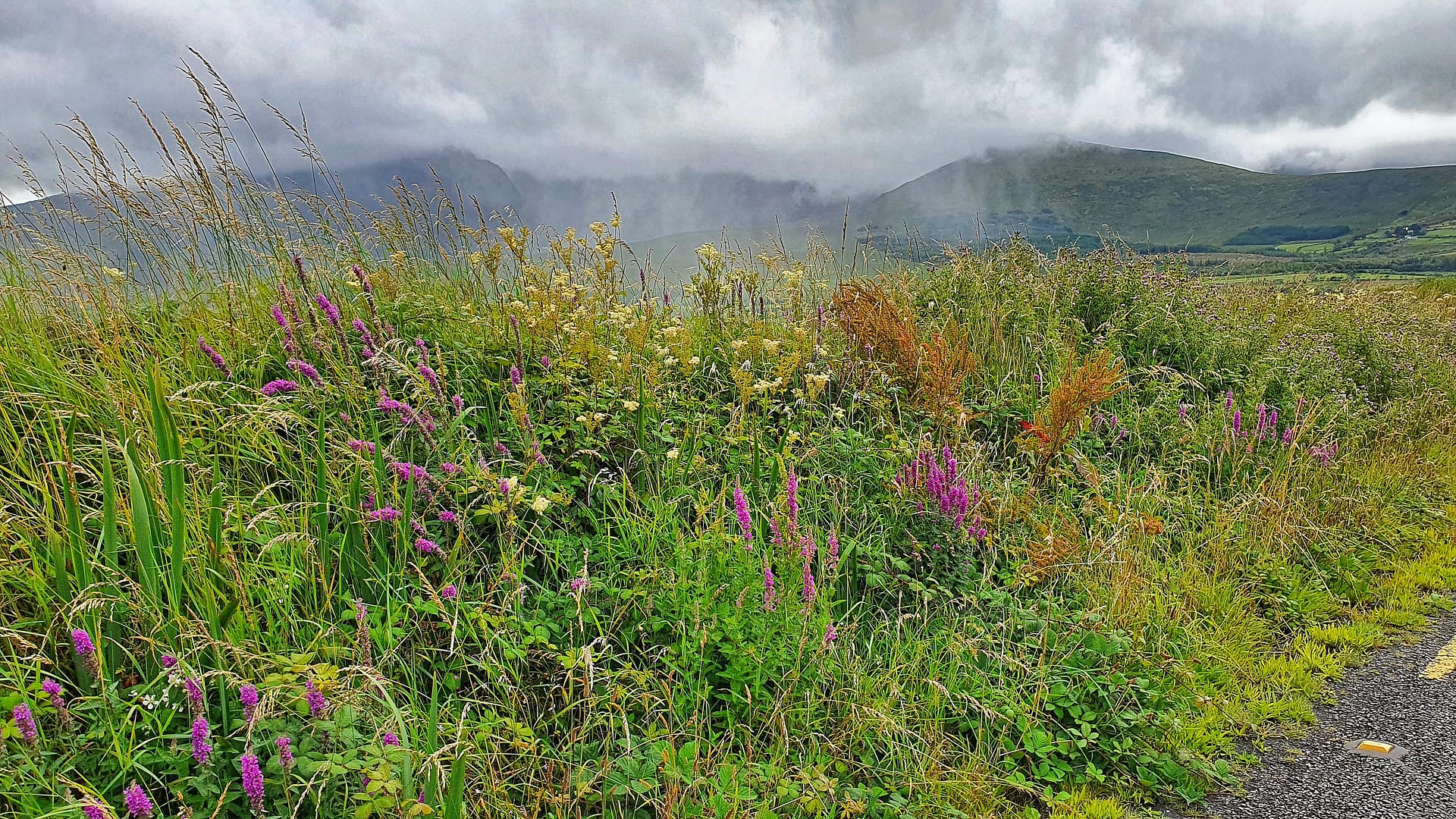
The mid-summer wildflowers on the Dingle Peninsula are spectacular right now!
In most of the places I’ve lived (the Pacific Northwest in the U.S. and Austria), the major showing of wildflowers is always in the spring. On the western coast of Ireland, however, the show begins in the spring and doesn’t stop until November! The majority of wildflowers that bloom here in the spring are in shades of yellow and white. These continue into mid-summer, but then they are joined by flowers in glorious shades of purple, orange and red.
Highlights of the Mid-Summer Wildflowers on the Dingle Peninsula
Purple loosestrife
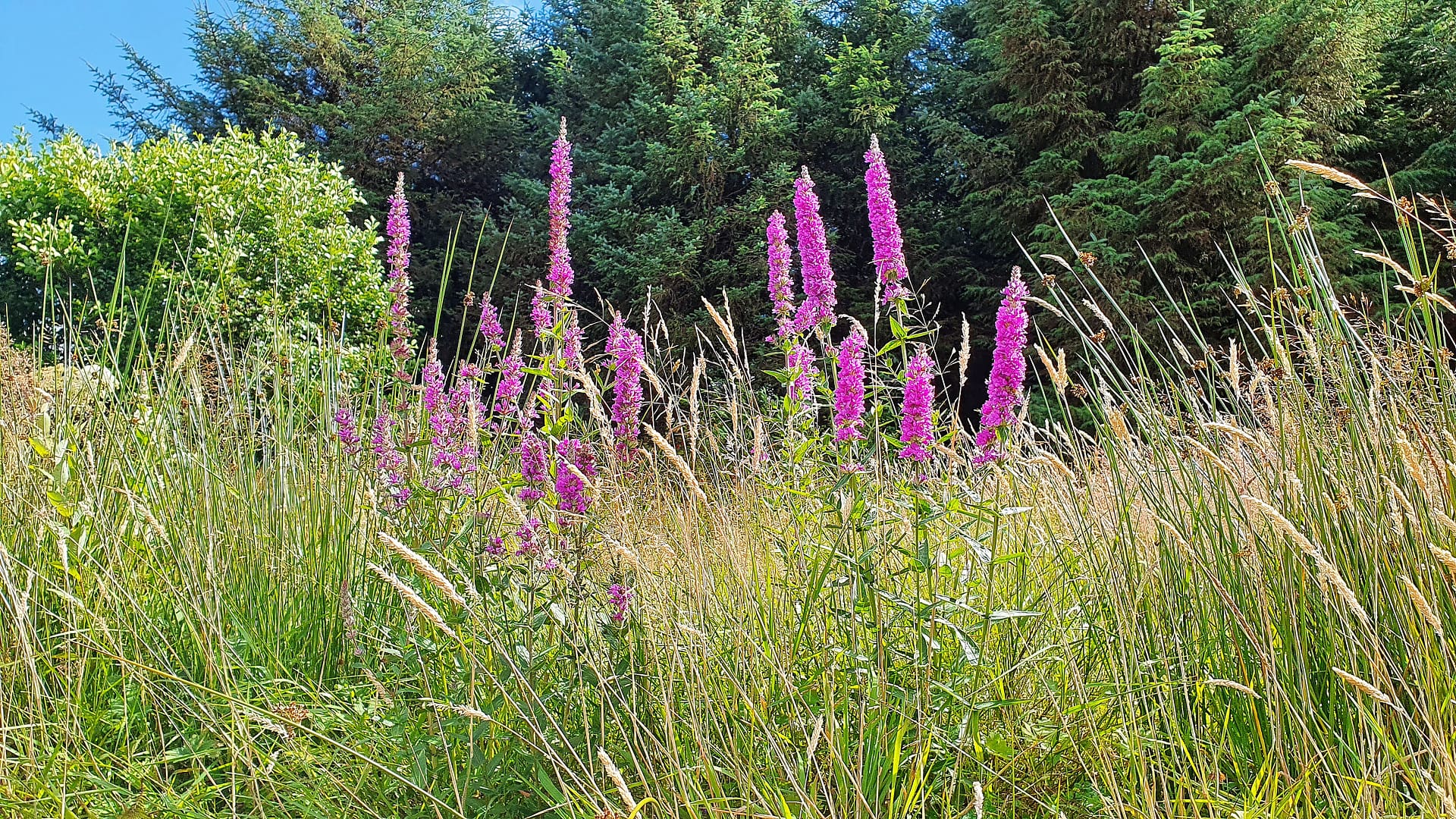
I love all of the wildflowers that grow on the Dingle Peninsula throughout the year, but I must admit that my favorite mid-summer wildflower is purple loosestrife. Native to Ireland, the flowers are blooming now all over our wildlife garden, along the roadsides, and among the hedgerows. We have more loosestrife in our garden than we did last year, so I am hoping to have even more next year!
These beautiful flowers start blooming around the beginning of July, and they will continue into September. They can reach heights of 4 to 7 feet(!), but most of the ones in our garden are around 2 to 4 feet. A special plus is that the bees absolutely love their nectar.
Heather
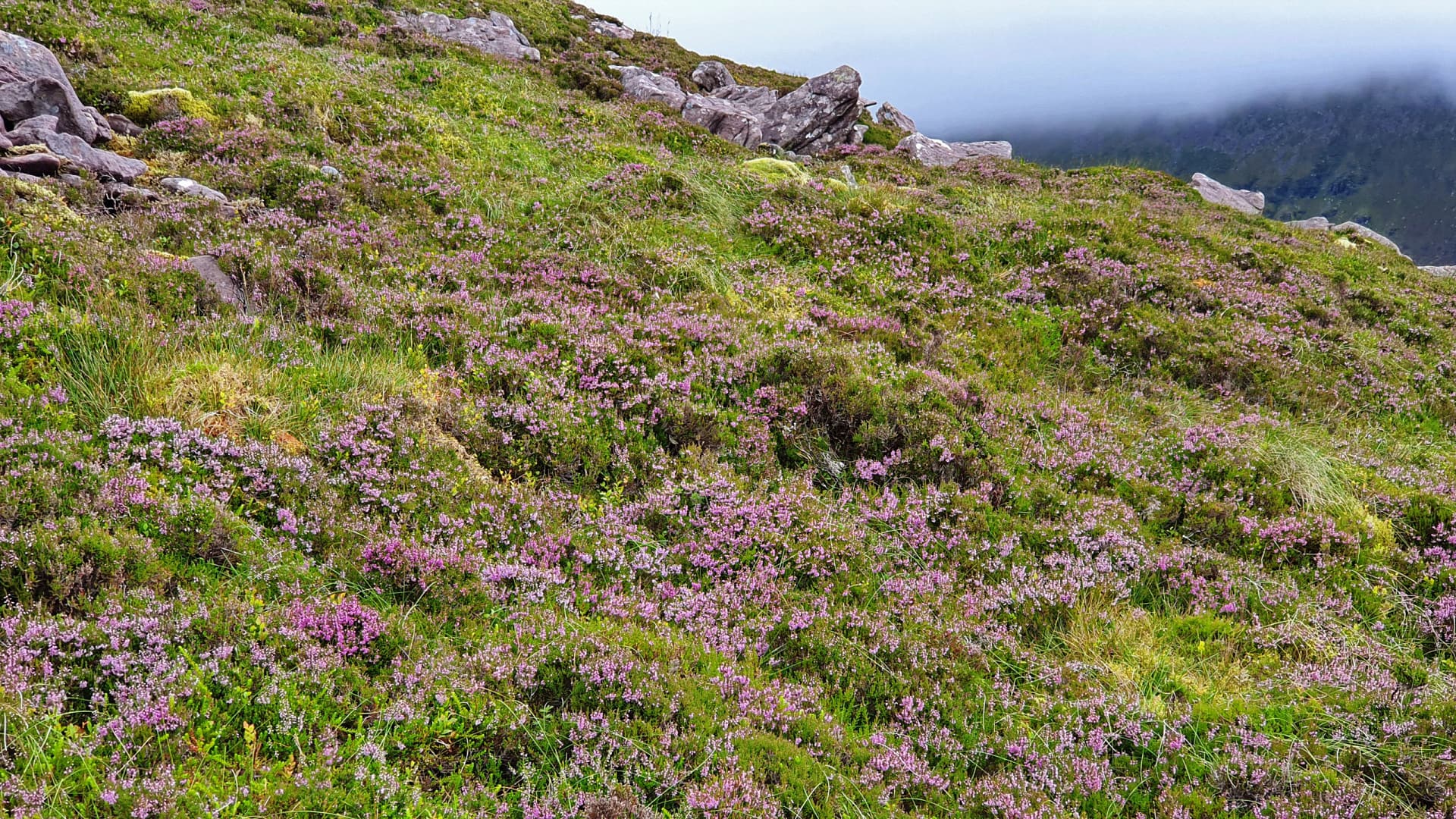
Another favorite mid-summer wildflower of mine is heather, which starts blooming in July and will continue into October. I think one of the reasons I love heather so much is because it features prominently in one of my favorite folksongs, Wild Mountain Thyme:
Will you go, lassie, go
And we’ll all go together to pick wild mountain thyme
All around the blooming heather
Will you go, lassie, go
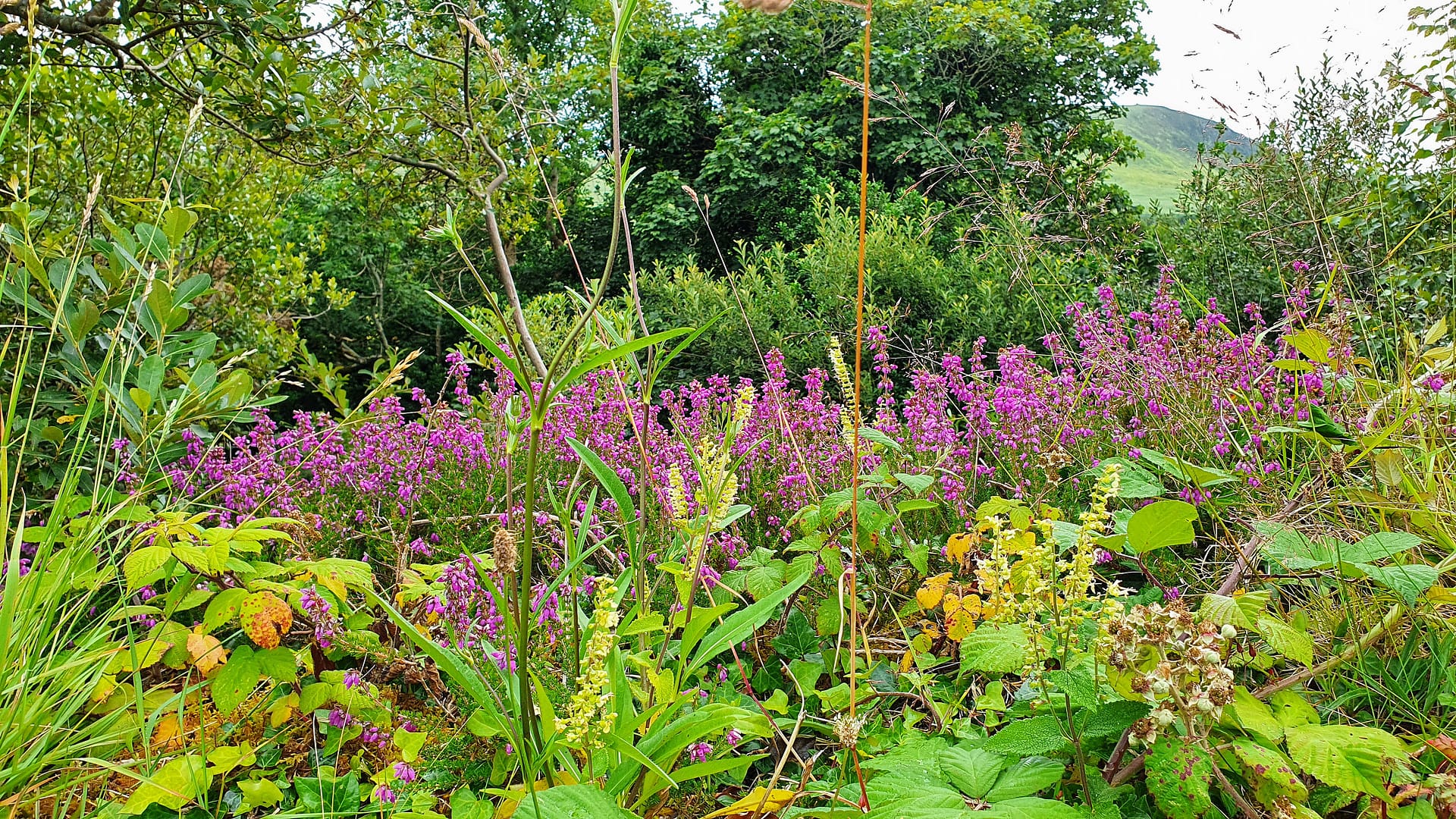
Honeysuckle
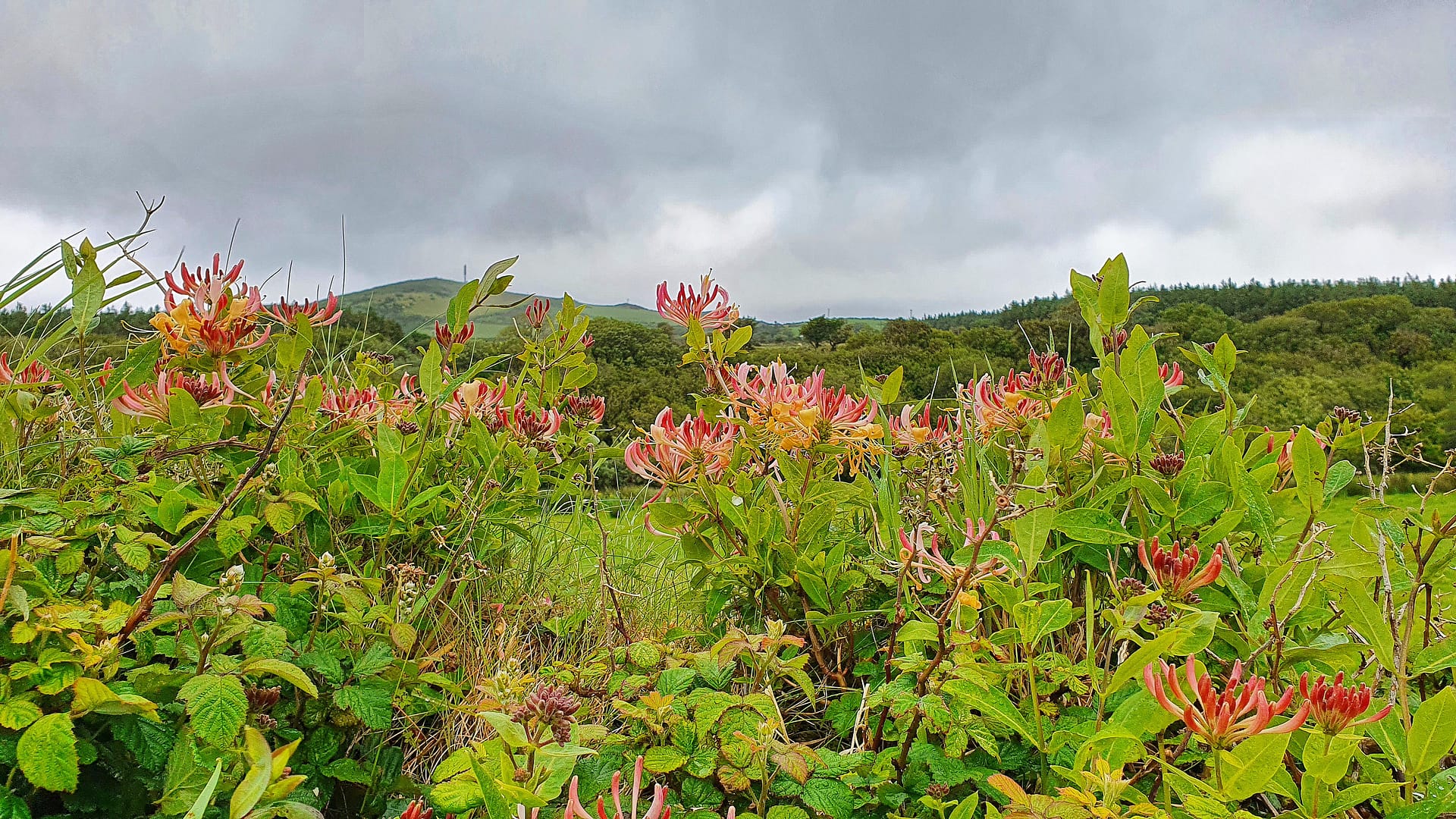
When I was a child, my mother used to sing a lullaby to my twin sister and me called Kentucky Babe. The lyrics begin with ‘Skeeters are a hummin’ on the honeysuckle vine, sleep Kentucky Babe.’
As a result, I have always associated honeysuckle with the American South. This is one reason I was surprised to see it growing wild all over the west coast of County Kerry. It turns out that honeysuckle is native to Ireland, where it twines itself into the hedgerows and is not only beautiful but also fragrant. In addition, it blooms a long time–from June to October.
…how sweetly smells the honeysuckle
in the hush’d night….’
Alfred, Lord Tennyson (1859)
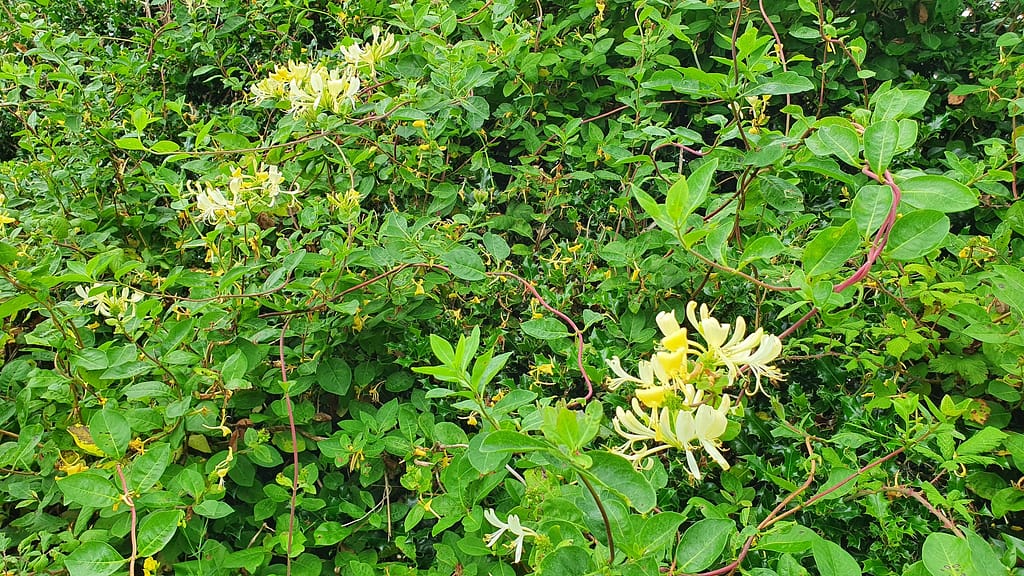
Tutsan
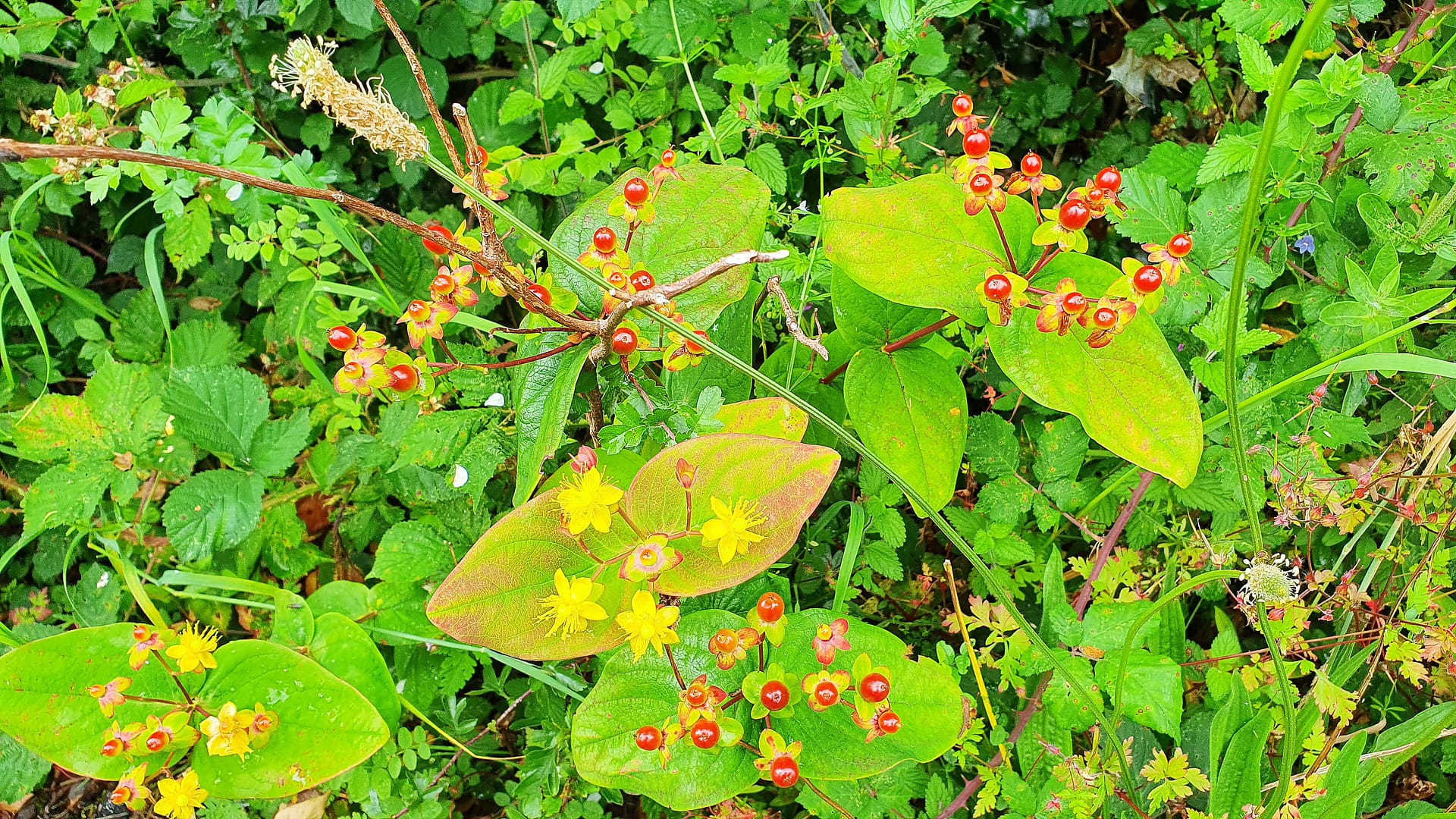
I was excited to see a flower that is completely new to me along the edge of our country road. A small, fairly low-growing plant, the leaves, flowers and berries are just beautiful. It also seems to be rather rare because I only see it occasionally in my walks around the Dingle Peninsula. It is called tutsan, and it blooms from June to August.
The rather unusual name apparently comes from the French words toute saine, which mean all healthy. This likely refers to the plant’s antiseptic properties and its traditional use as an herbal medicine for treating wounds and inflammation.
Tufted Vetch
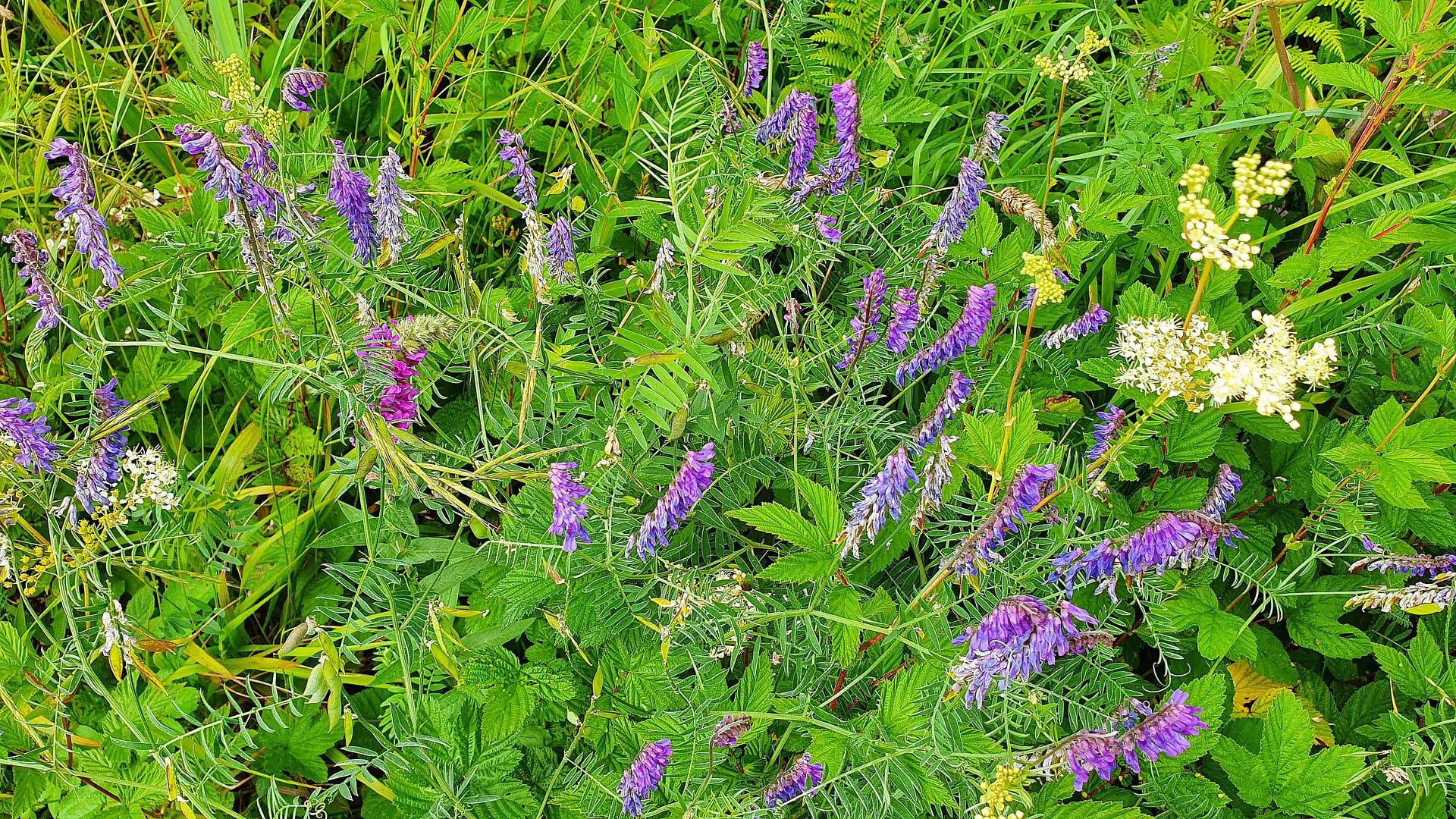
This beautiful blue-violet flower blooms from June to August. It grows on the edges of woodlands, at the feet of hedgerows, in coastal areas and on grasslands. Like peas and clover, it belongs to the legume family and helps to fix nitrogen into the soil. In addition, bees and other insects love it.
Common Knapweed
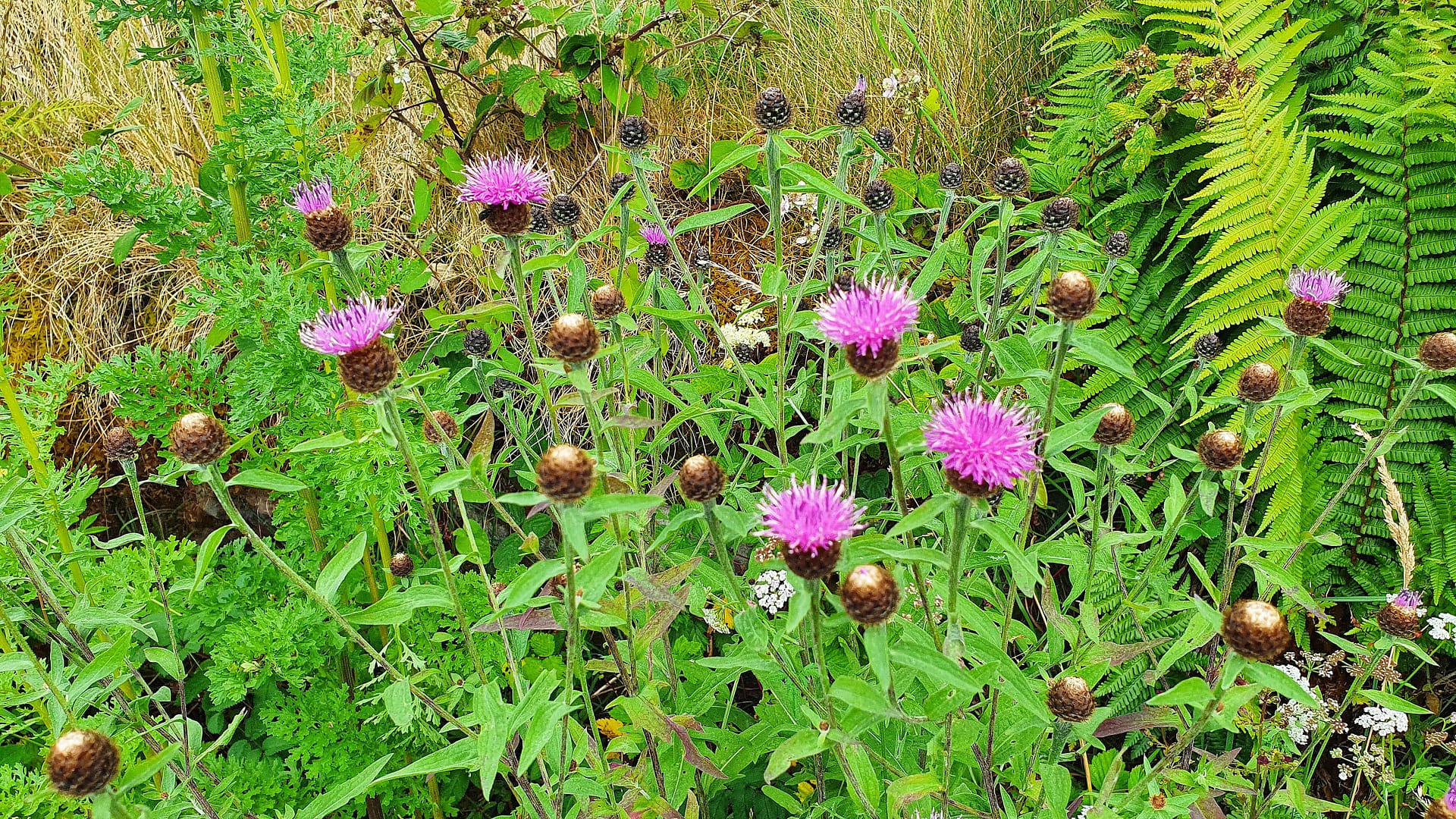
This cheerful purple-pink flower looks a bit like thistle, but without the prickles. It blooms from June to October along country lanes and in grasslands, and butterflies love it!
Wild Angelica

I find this plant really interesting. A member of the carrot family, it blooms from July to September in ditches, meadows, along roadsides and in wet woodlands. Because it loves damp ground, it also grows happily in our bog.
Angelica is mostly white but can also be tinged with pink and can grow to be over 4 feet tall. Interestingly, the flowers grow out of a bulbous shape on the stem that can sometimes look almost human!
The plant has traditionally been used to treat rheumatism, gout and indigestion, to flavor liqueurs, and to dye cloth. Numerous insects–including this large, fat bumblebee–love it!
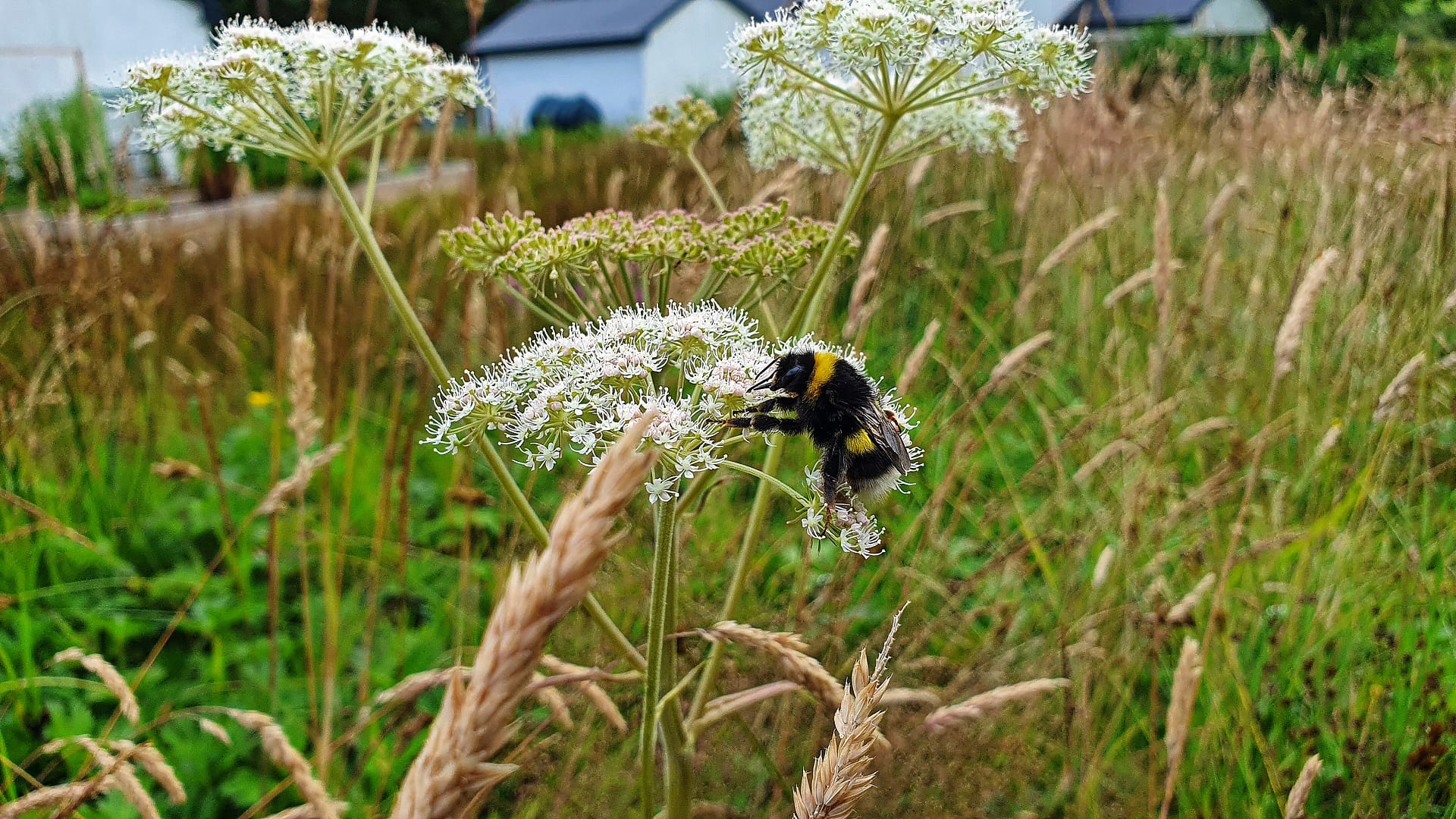
Selfheal
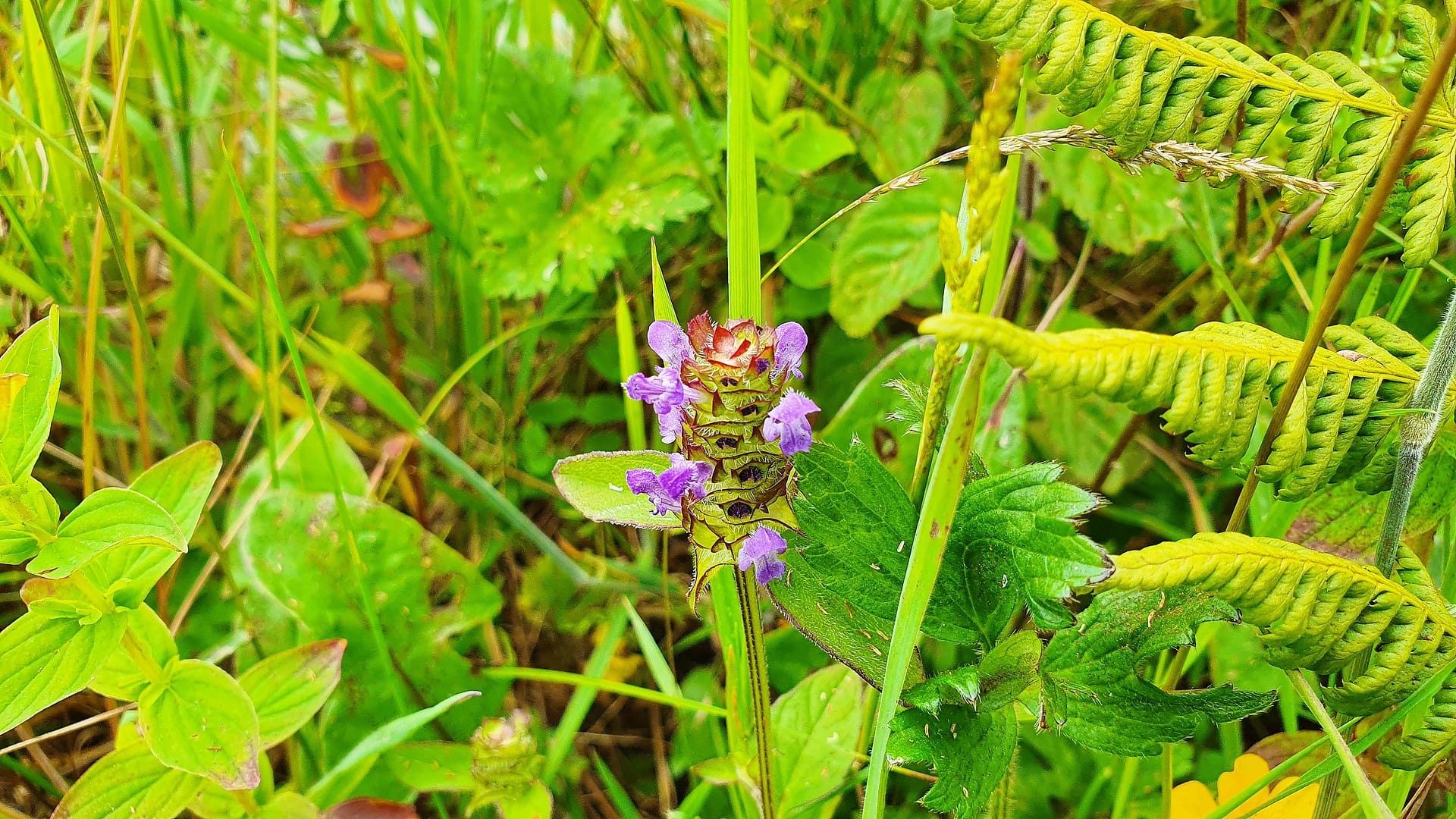
I discovered the blue-violet selfheal in our garden for the first time this year. So far, it is growing in just one place–on a dryer hillock behind our pond and underneath a lot of taller plants. It blooms from June to August. The plant is native to Ireland, and bees and moths love it.
Selfheal has long played an important role in traditional herbal medicine, where it has been used to stop bleeding, heal wounds and treat heart disease.
Fuchsia
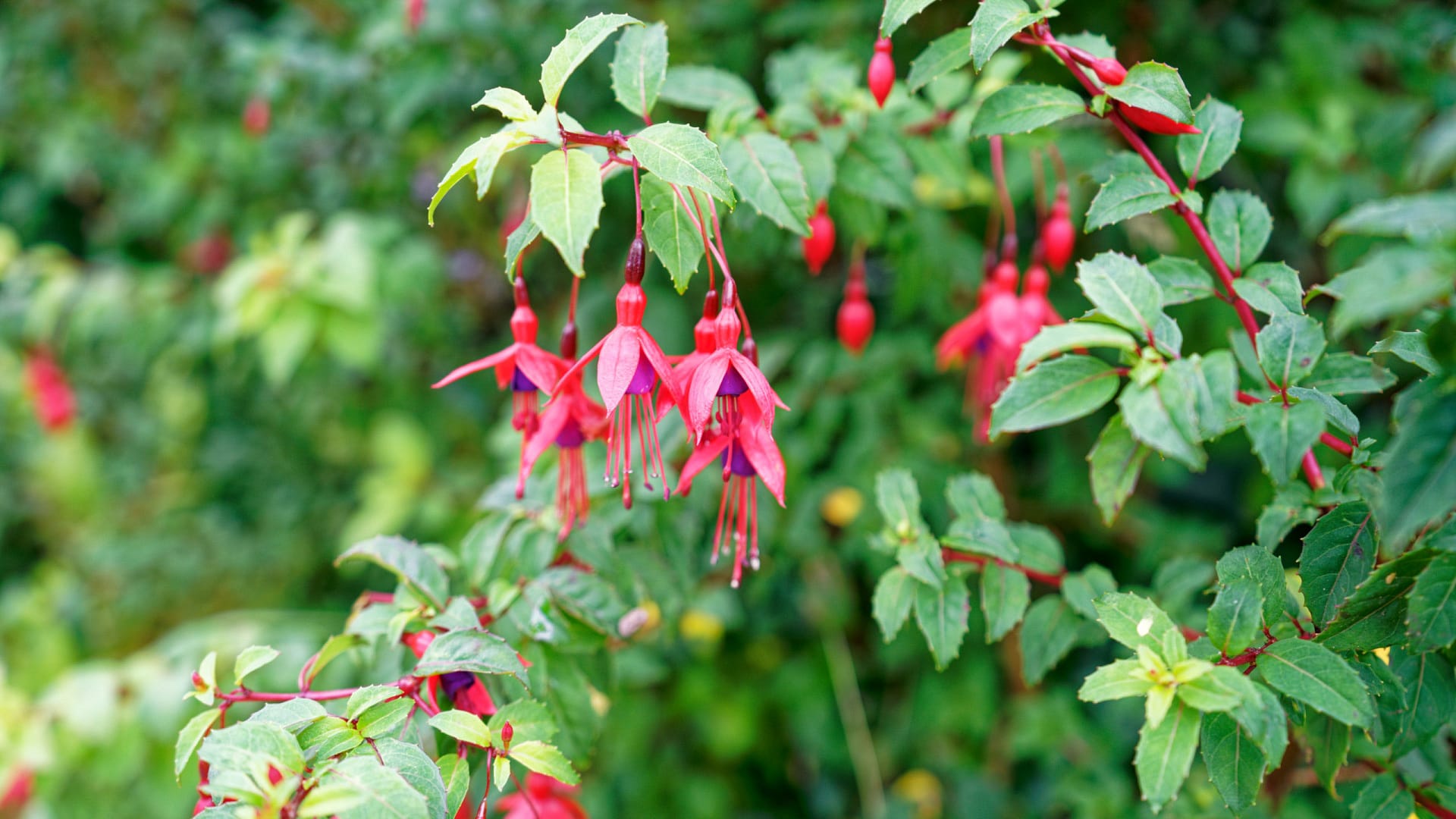
The vibrant dark pink fuchsia is a non-native plant that escaped from people’s gardens somewhere along the way. Now it grows thickly in hedgerows and coastal areas throughout southwest Ireland. It begins to blossom in June but really comes into its own in July and August. Some flowers can even be found blooming into October!
However it got here, fuchsia is absolutely spectacular now along the narrow roadways that thread through the Dingle Peninsula and the rest of County Kerry.

Montbretia/crocosmia
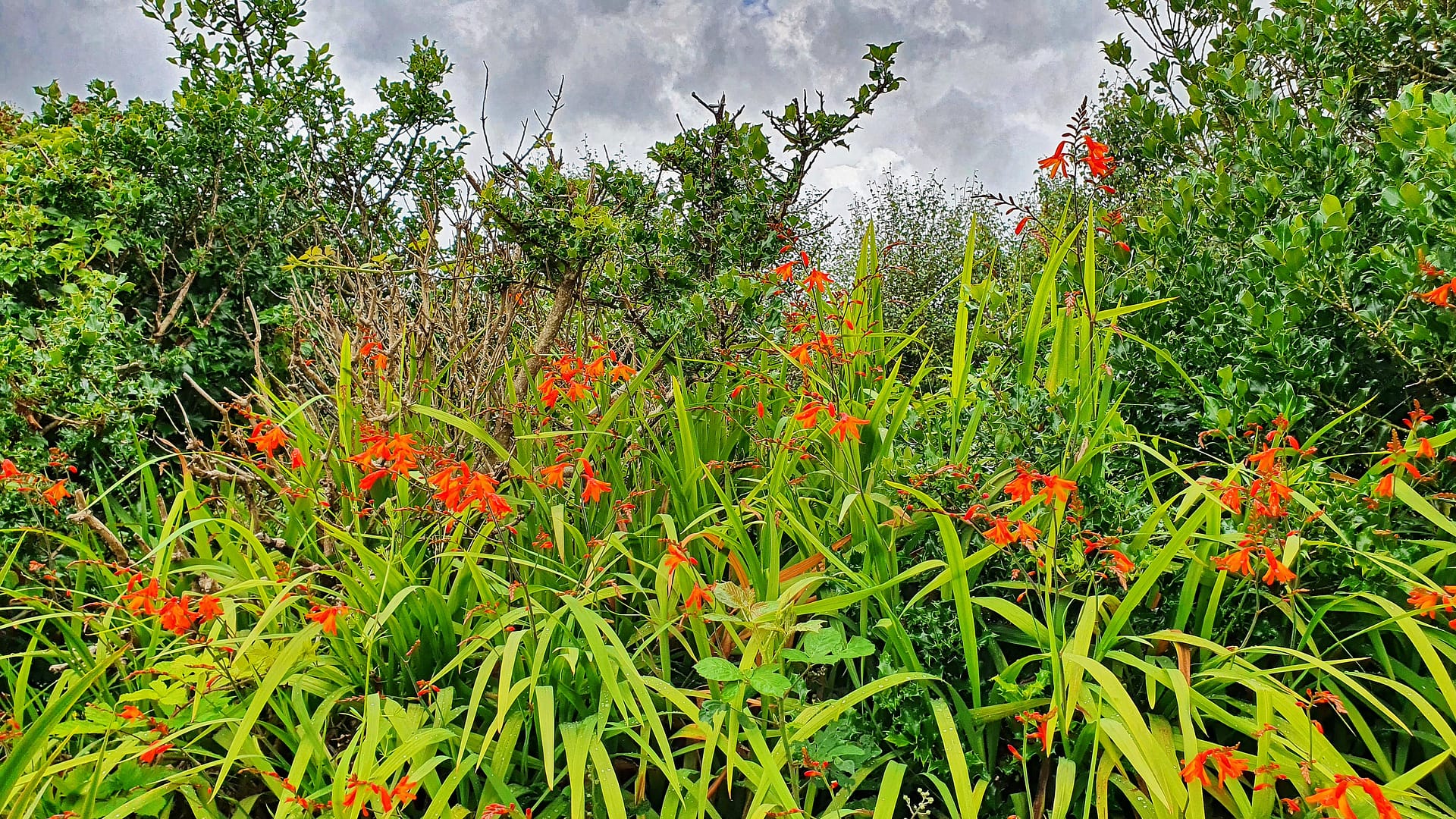
Montbretia (known as crocosmia in the U.S.) is another non-native garden escapee that is absolutely spectacular right now. From July to September, its bright orange flowers line hedgerows and country lanes all over this part of Ireland.
Even more spectacular, montbretia often grows at the foot of fuchsia, creating masses of red and orange that are often interspersed with purple loosestrife as well. I have tried and tried to take pictures that capture the full beauty of such scenes, but the results are pale approximations of the real thing!
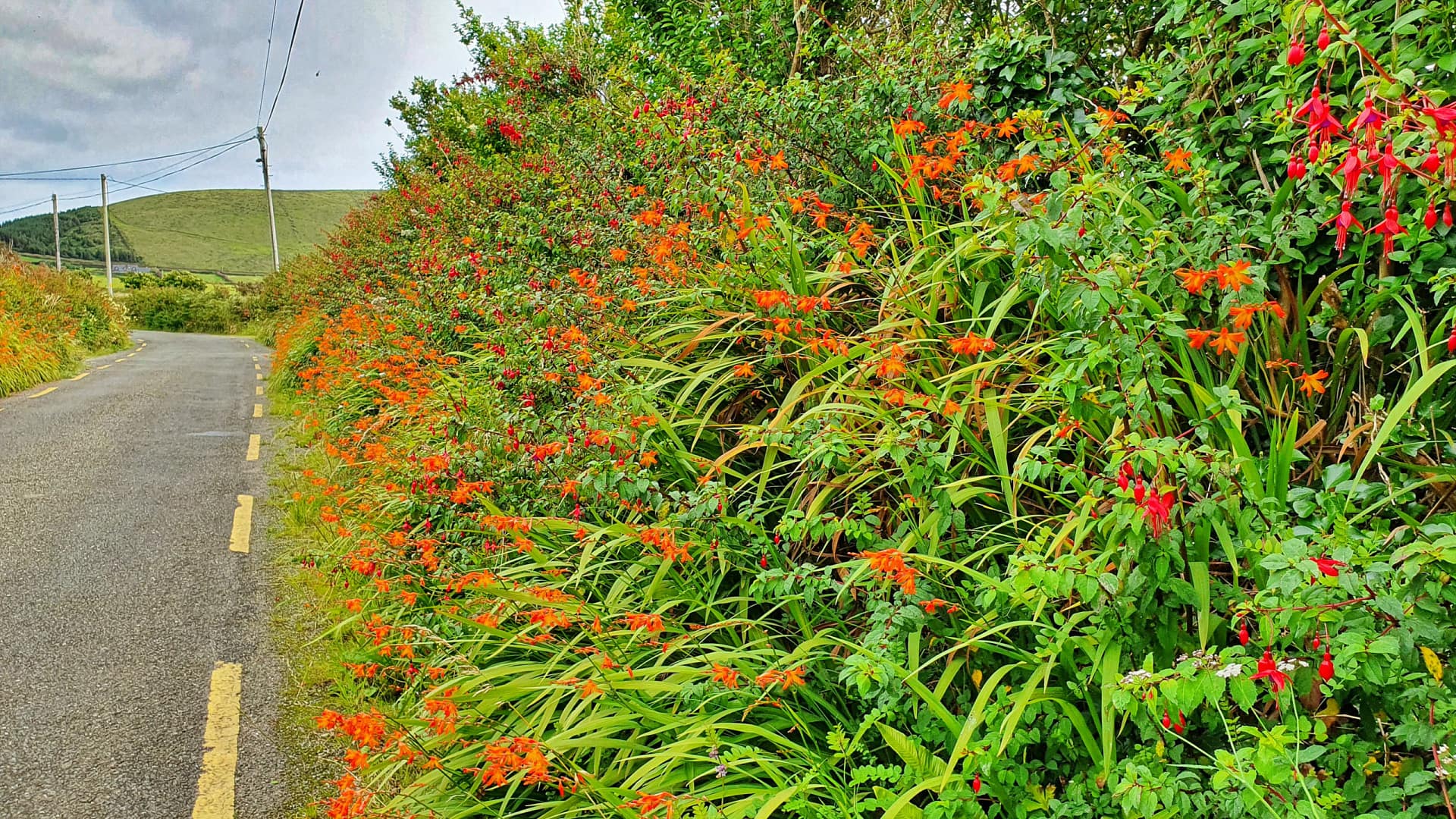
Meadowsweet
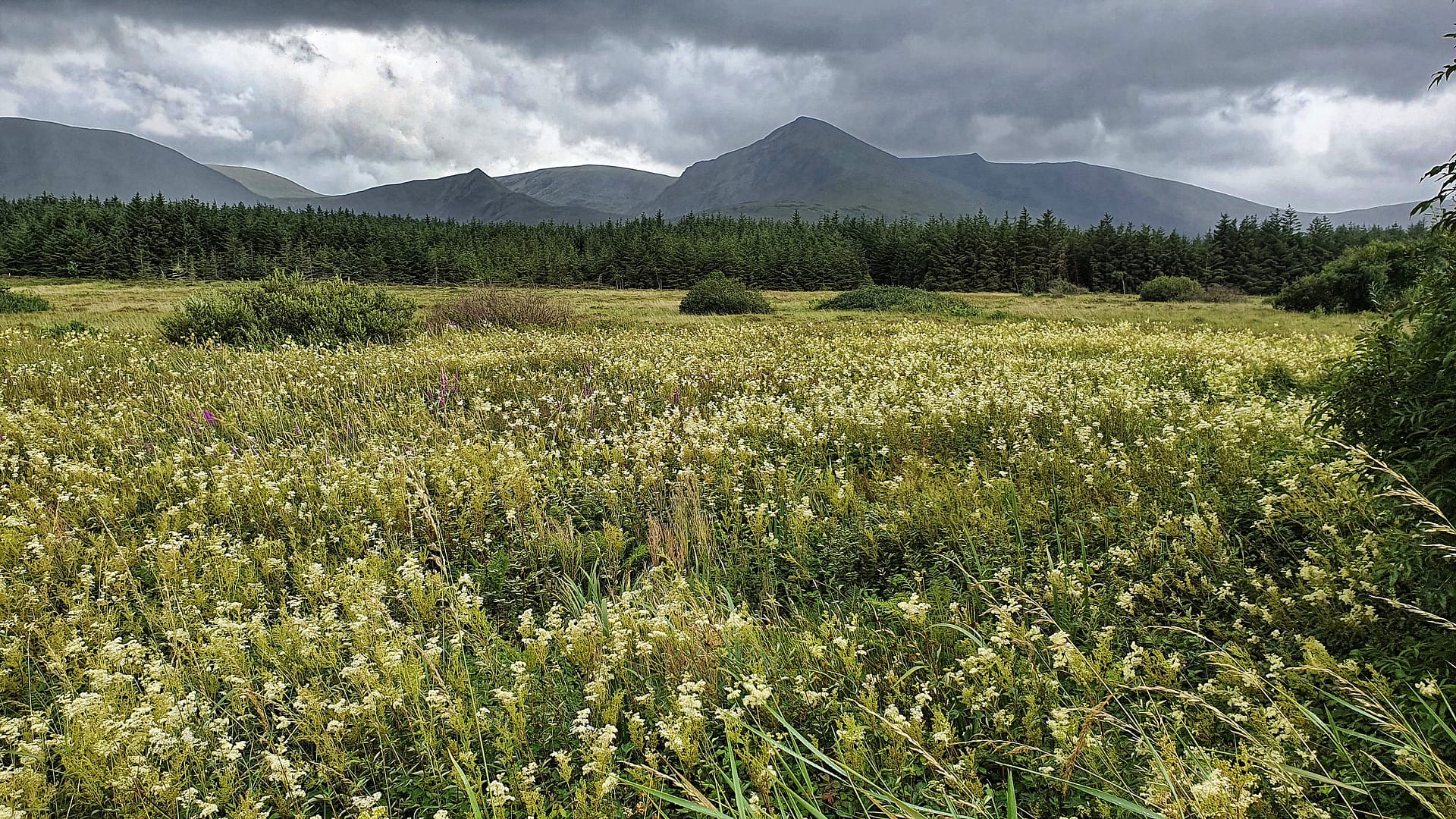
Meadowsweet is another mid-summer wildflower that is a favorite of mine. It is a graceful, fragrant white flower that blooms from June to September. Also called Queen of the Meadow, it grows in damp environments, such as bogs and along riverbanks. Native to Ireland, meadowsweet is a member of the rose family. Its wonderful scent draws bees to its flowers, which are heavy with pollen.
The Druids viewed meadowsweet as one of their most sacred herbs and used it in rituals as well as for medicinal purposes. In particular, traditional herbalists have used meadowsweet to treat digestive problems, stomach ulcers, diarrhea and arthritic joints. This makes sense because it has been found to contain salicylic acid (the basis of aspirin). All parts of the plant–flowers, leaves and roots–can be used, but the roots contain the highest concentrations of salicylic acid.
Meadowsweet has also been used to flavor tea, wine, beer, vinegar and honey mead (a type of wine).
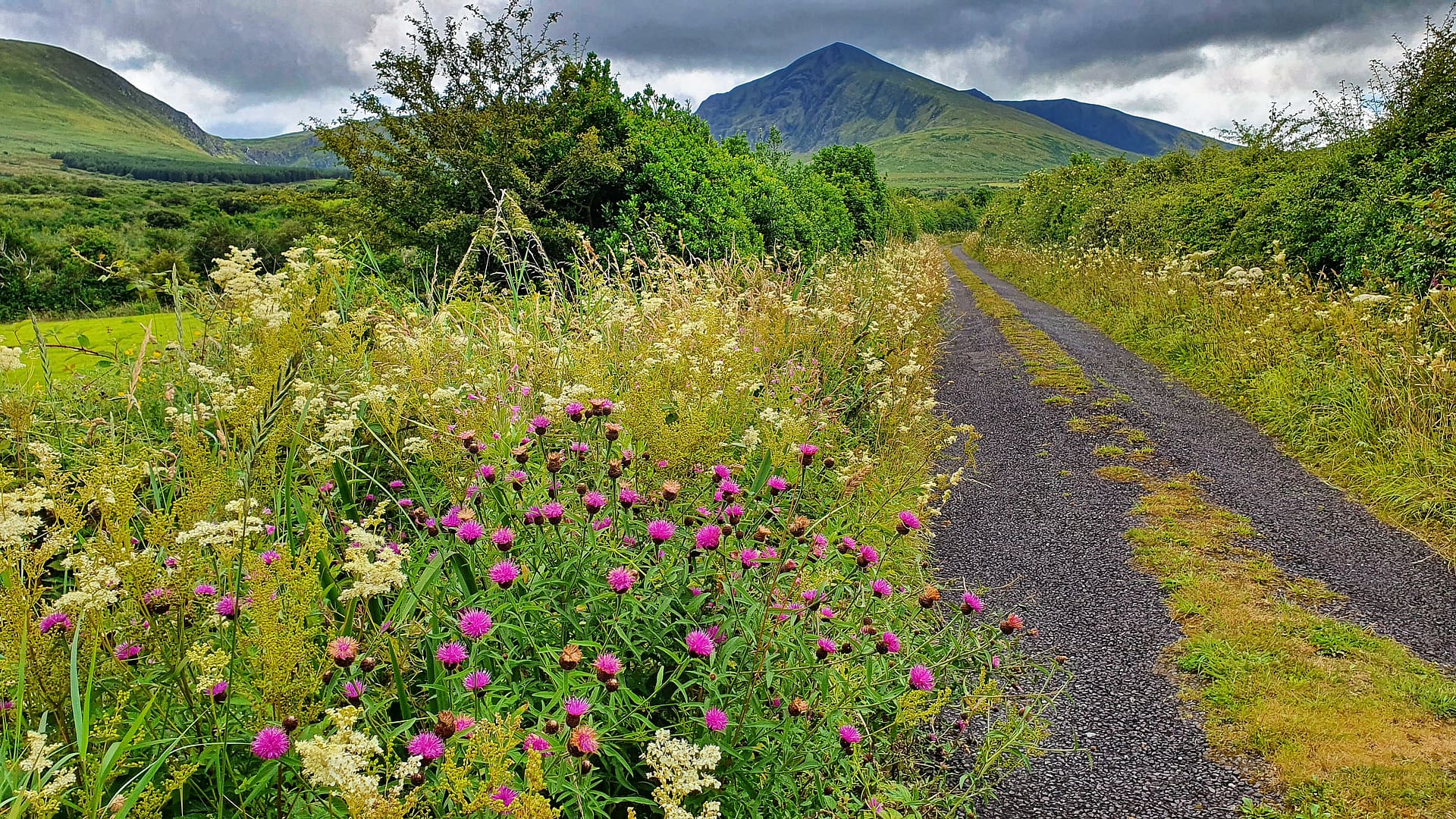
The above pictures are just a sample of the many mid-summer wildflowers that are now blooming on the Dingle Peninsula. Since this post is already long enough, I will write about some of the others next year! In any case, the pictures help to demonstrate all of the natural beauty that people who live here–and the people who visit at this time of year–have the great privilege of experiencing.

What spectacular fields of flowers! It must be an absolute paradise at this time of year!
It is!
Yes it is, all year round